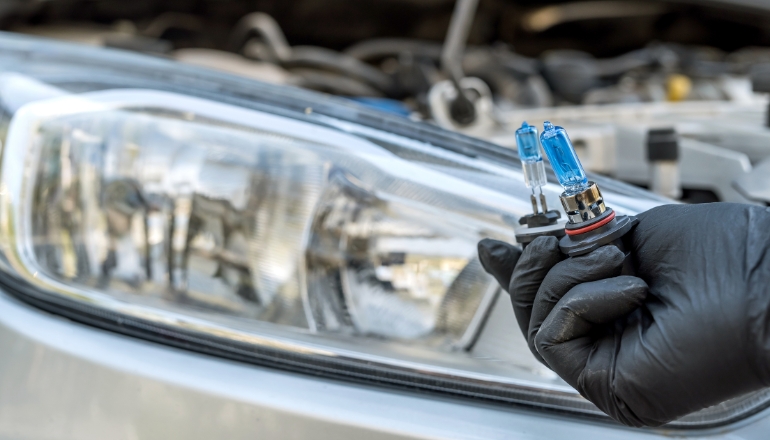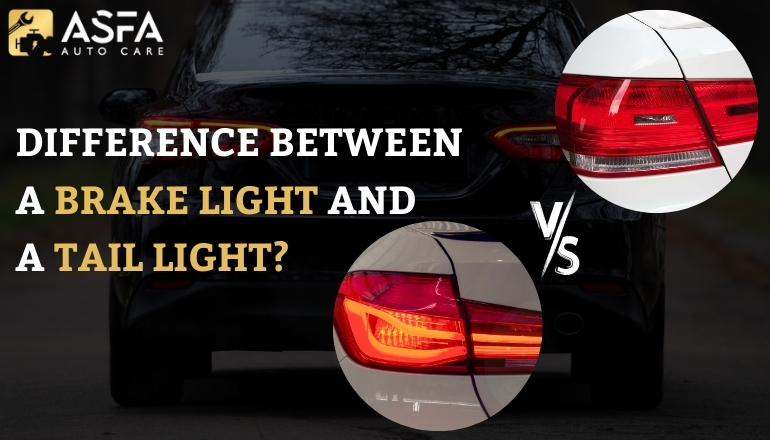Do you understand the difference between a brake light and a tail light? Have you always been confused about a bulb brake light?
To help you understand the crucial differences between brake and tail lights, let’s talk about both of them in some detail.
First and foremost, the purpose of both tail lights and rear lights is to provide safety to cars. However, there is a significant difference between the two! If you ever go for go for car repair shops in Adelaide, your mechanic will surely tell you the function of the two. In this blog, we will talk about the differences between the tail lights and rear lights and why they are crucial for your vehicle’s safety.
Tail lights
Have you ever seen your car’s two rear red lights? Driving at night requires using what are known as taillights, which are more than simply showpieces. These tail lights glow a brilliant red when your headlights are turned on. The primary responsibility of tail lights is to indicate to other vehicles precisely their location on the road, particularly in dimly lit situations like dawn, dusk, or overcast weather.
Taillights are available in a variety of forms and styles, ranging from modern LED strips to conventional spherical lights. Therefore, even if safety is crucial, you may still select taillights for your automobile that give it some flair!
After understanding about tail lights, let us now talk about brake lights.
Brake lights
Though they serve a different purpose than taillights, brake lights are just another red light on the back of your vehicle. When you press the brake pedal, these lights become a bright red, alerting oncoming traffic that you are slowing down or about to stop. If you live in Adelaide, regularly get your car inspection in Adelaide done to ensure that your brake lights are working well.
Brake lights ensure that there are no collisions on the road as it alerts the nearby vehicles that the vehicle ahead is slowing down.
Brake lights not only save lives on the road, but they also come in a variety of stylish designs, like tail lights.
Do Tail Lights and Brake Lights Share the Same Bulb?

Yes, the taillights may share a bulb with brake lights in certain autos. There would be two filaments in this bulb:
- A dimmable filament that shines for the tail light.
- A more brilliant filament that turns on the brake light.
- On the other hand, some cars have separate bulbs for the brake and tail lights.
Regardless of how your automobile is configured, it’s crucial to ensure both lights operate correctly. In addition to posing a risk to public safety, malfunctioning lights may result in fines when inspected by the authorities.
Technical Difference Between The Two
Here’s a clearer explanation of the distinction between Tail light vs brake light:
- Tail lights: These are dimmer and turn on whenever your headlights turn on, much like your car’s nightlights do. This makes your automobile easier to see for other drivers when it’s dark outside or has poor vision.
- Brake lights: These are only activated when the brake pedal is pushed. They are significantly brighter than tail lights. For the cars behind you, this is equivalent to a large red STOP sign, alerting them that you’re slowing down.
Although both lights are crucial for safety, their functions and brightness levels vary based on how they are connected.
Improvement in Functionality and Visual Appeal
- See and be seen: Regular lights weaken over time, but LEDs are super bright and sharp! This is especially important for those brake lights – the brighter they are, the faster drivers behind you will notice you slowing down. It’s like having a super strong flashlight for your car!
- Lights that last: Forget constantly replacing burned-out bulbs! LED lights last way longer than regular ones. They’re tough and can handle bumpy roads, so you won’t be stuck on the side changing a dead bulb anymore.
- Style your ride: LED lights come in all sorts of neat colours and designs (as long as they’re street-legal, of course). It’s like adding cool stickers to your car but with light!
- Save gas and be eco-friendly: LED lights are like tiny sippers for power. They use way less energy than regular bulbs, which means a little more gas is left in your tank and helps out the environment.
So, not only will LED lights make your night driving safer and easier, but they’ll also make your car look super sharp. Plus, they last forever and save you money – that’s a win-win situation!
Personalization and Regulatory Compliance
Although having stylish lighting is exciting, there are certain guidelines to remember! There are restrictions on the colors and designs you may use. For example, you cannot paint your brake lights green. This is to ensure that all drivers understand the meaning of your lights. Before personalizing your lights, it’s wise to confirm what’s permitted in your region since various areas may have different regulations. Keep in mind that using legal and safe lighting is the best option!
Read more: Car Sensor Issues: Tips and Tricks (A Depth Guide)
Conclusion
Both brake and tail lights are important for your car’s safety. If you ever visit the general automotive repair service shop, they will best guide you regarding the two lights. If you’re searching for a dependable general auto repair service nearby, visit your search engine and look out for the ratings. Always ensure that both your tail lights and brake lights are working in perfect condition.
FAQs:
Q1. Do brake lights and tail lights use the same bulb?
Ans. In some cars, they share the same bulb with dual filaments for separate functions. In others, they use separate bulbs.
Q2. Are tail lights always on when driving?
Ans. No, tail lights typically turn on with the headlights or automatically in cars with daytime running lights (DRLs).
Q3. What color are brake lights and tail lights?
Ans. Brake lights are bright red, while tail lights are usually dimmer red.
Q4. Can a malfunction in one affect the other?
Ans. Yes, especially in vehicles where both functions share the same bulb or wiring.
Q5. Are brake lights brighter than tail lights?
Ans. Yes, brake lights are brighter to signal braking, while tail lights are dimmer for visibility without causing glare.
Q6. What are common causes of brake or tail light failure?
Ans. Burnt-out bulbs, faulty fuses, damaged wiring, or issues with the brake pedal switch can cause failures.
Q7. Is it illegal to drive without functioning brake or tail lights?
Ans. Yes, both are essential for road safety, and driving without them can result in fines or penalties.
Q8. How often should I check my brake and tail lights?
Ans. It’s a good practice to inspect them during regular maintenance or if another driver signals an issue.
Q9. Can LED lights be used for brake and tail lights?
Ans. Yes, many modern vehicles use LEDs for better brightness, efficiency, and durability compared to traditional bulbs.

